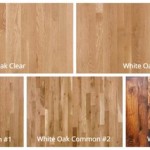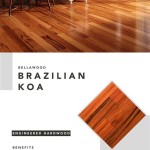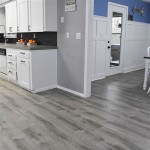LVT Flooring Reviews: A Comprehensive Guide
Luxury Vinyl Tile (LVT) flooring has emerged as a dominant force in the flooring industry, offering a compelling blend of aesthetics, durability, and affordability. Its versatility allows it to mimic the look of natural materials like hardwood, stone, and ceramic tile, while providing enhanced resilience and ease of maintenance. This detailed guide will explore the various aspects of LVT flooring based on consumer reviews and expert opinions, offering insights into its advantages, disadvantages, installation considerations, and maintenance requirements.
The increasing popularity of LVT flooring is driven by its ability to cater to a wide range of needs and preferences. Homeowners, property managers, and commercial establishments are increasingly choosing LVT as a cost-effective and practical alternative to traditional flooring options. This guide aims to provide a thorough understanding of LVT flooring based on user experiences and professional assessments, enabling informed decision-making when considering this flooring solution.
Understanding the Composition and Construction of LVT Flooring
LVT flooring is typically composed of multiple layers that contribute to its overall performance and durability. These layers generally include a backing layer, a core layer, a printed design layer, and a wear layer. The backing layer provides stability and cushioning, while the core layer offers rigidity and impact resistance. The printed design layer is responsible for the visual appearance of the flooring, replicating the patterns and textures of natural materials. The wear layer, the outermost layer, protects the flooring from scratches, stains, and fading.
The wear layer is a crucial indicator of LVT flooring's durability. It is measured in mils (thousandths of an inch), with thicker wear layers offering greater resistance to wear and tear. Residential applications typically require a wear layer of 12 mils or higher, while commercial applications may necessitate a wear layer of 20 mils or more. The quality of the materials used in each layer and the manufacturing process employed also significantly impact the overall performance of LVT flooring.
LVT flooring is available in various formats, including individual tiles or planks, allowing for diverse installation patterns and design options. These different formats provide flexibility in customization and can accommodate various room sizes and shapes. The construction and composition of LVT flooring contribute significantly to its overall performance, durability, and aesthetic appeal.
Evaluating the Advantages of LVT Flooring Based on Reviews
Consumer reviews and expert opinions consistently highlight several key advantages of LVT flooring. One of the most prominent advantages is its aesthetic versatility. LVT flooring can convincingly replicate the look of natural materials, providing a high-end appearance at a fraction of the cost. This allows homeowners to achieve their desired aesthetic without the expense and maintenance associated with hardwood, stone, or ceramic tile.
Durability is another significant advantage of LVT flooring. Its layered construction and protective wear layer make it resistant to scratches, dents, and stains. This durability makes LVT flooring a suitable choice for high-traffic areas, homes with pets and children, and commercial establishments. Many reviews emphasize the flooring's ability to withstand daily wear and tear without showing significant signs of damage, contributing to its long-term value.
Water resistance is a key benefit frequently mentioned in LVT flooring reviews. Unlike hardwood, LVT flooring is impervious to water damage, making it suitable for bathrooms, kitchens, and basements. This water resistance also makes it easier to clean and maintain, as spills and messes can be easily wiped away without causing permanent damage. This is a key factor driving its popularity in areas prone to moisture.
Ease of installation is another cited advantage of LVT flooring. Many LVT products feature a click-lock installation system, which allows for a floating floor installation. This type of installation does not require adhesives or nails, making it easier and faster for both professionals and DIY enthusiasts. The ease of installation can significantly reduce labor costs and project timelines compared to traditional flooring options.
Finally, comfort is a notable advantage of LVT flooring. The layered construction provides a degree of cushioning and sound absorption, making it more comfortable to walk on and quieter than hard surfaces like tile or stone. This comfort factor is often cited as a desirable feature, particularly in residential settings where comfort is a priority.
Addressing the Potential Disadvantages of LVT Flooring
While LVT flooring offers numerous advantages, it is essential to acknowledge potential disadvantages based on user reviews and expert assessments. One frequently mentioned concern is the potential for indentations from heavy furniture or appliances. While LVT is durable, prolonged exposure to heavy weight can cause indentations, particularly in lower-quality products with thinner wear layers. This can be mitigated by using furniture pads and avoiding placing excessively heavy objects on the flooring.
Another potential disadvantage is the susceptibility to fading from prolonged exposure to direct sunlight. While LVT flooring is generally fade-resistant, excessive exposure to UV rays can cause fading over time, especially in darker colors. To mitigate this risk, it is recommended to use curtains, blinds, or UV-protective window film in areas with high sun exposure.
Repairing damaged LVT flooring can sometimes be challenging. While individual tiles or planks can often be replaced, matching the exact color and pattern of the existing flooring can be difficult, especially if the original product is no longer available. It is advisable to purchase extra flooring during the initial installation to ensure that replacement pieces are readily available if needed.
The perception of LVT flooring as a synthetic material is another potential disadvantage for some consumers. While LVT can convincingly mimic the appearance of natural materials, it lacks the inherent warmth and character of genuine hardwood or stone. For homeowners who prioritize the authenticity of natural materials, LVT flooring may not be the ideal choice.
Finally, the quality of LVT flooring can vary significantly depending on the manufacturer and price point. Lower-quality products may have thinner wear layers, less realistic designs, and a shorter lifespan. It is essential to research different brands and products carefully and to choose a reputable manufacturer known for producing high-quality LVT flooring.
Installation Considerations and Best Practices
Proper installation is critical to the long-term performance and appearance of LVT flooring. The subfloor must be clean, level, and dry before installation begins. Any imperfections in the subfloor can telegraph through the LVT flooring, resulting in unevenness or premature wear. It is essential to address any cracks, holes, or other issues with the subfloor before proceeding with the installation.
Acclimation is another important consideration. LVT flooring should be allowed to acclimate to the room's temperature and humidity for at least 48 hours before installation. This allows the flooring to expand or contract, preventing issues such as buckling or gapping after installation. Following the manufacturer's recommendations for acclimation is crucial for ensuring a successful installation.
When installing LVT flooring with a click-lock system, it is important to follow the manufacturer's instructions carefully. Ensure that the planks or tiles are properly aligned and securely locked together. Using a tapping block and rubber mallet can help to ensure a tight and even fit. Avoid using excessive force, as this can damage the locking mechanism.
For glue-down LVT flooring, it is essential to use the appropriate adhesive recommended by the manufacturer. Apply the adhesive evenly to the subfloor, following the manufacturer's instructions for open time and working time. Position the LVT planks or tiles carefully and press them firmly into the adhesive. Roll the flooring with a heavy roller to ensure proper adhesion.
Proper expansion gaps should be left around the perimeter of the room to allow for expansion and contraction. These gaps should be covered with baseboards or quarter-round moldings to provide a finished appearance. Following these installation considerations and best practices will help to ensure a long-lasting and aesthetically pleasing LVT flooring installation.
Maintaining LVT Flooring for Longevity and Appearance
Regular maintenance is essential for preserving the appearance and extending the lifespan of LVT flooring. Sweep or vacuum the flooring regularly to remove dirt, dust, and debris. This will prevent scratches and wear from abrasive particles. Use a soft-bristled broom or a vacuum cleaner with a floor attachment.
Clean spills and messes promptly to prevent staining. Wipe up spills with a clean, damp cloth. For stubborn stains, use a mild detergent or a specially formulated LVT cleaner. Avoid using harsh chemicals, abrasive cleaners, or scouring pads, as these can damage the wear layer.
Use mats or rugs in high-traffic areas and at entrances to protect the flooring from dirt and wear. These mats will help to trap dirt and debris before it can be tracked onto the flooring. Regularly clean or replace these mats to maintain their effectiveness.
Protect the flooring from heavy furniture and appliances by using furniture pads or coasters. These pads will help to distribute the weight and prevent indentations. Avoid dragging heavy objects across the flooring, as this can cause scratches and dents.
Periodically deep clean the flooring to remove accumulated dirt and grime. Use a mop and a mild detergent or a specially formulated LVT cleaner. Rinse the flooring thoroughly with clean water and allow it to dry completely. Following these maintenance guidelines will help to keep LVT flooring looking its best for many years to come.

My Vinyl Plank Floor Review Two Years Later Cutesy Crafts

My Luxury Vinyl Plank Flooring Review Pros And Cons Average But Inspired

My Vinyl Plank Floor Review Two Years Later Cutesy Crafts

Luxury Vinyl Plank Flooring Review The Turquoise Home

Luxury Vinyl Plank Flooring Review The Turquoise Home

Vinyl Plank Flooring Review 2 Years Later Love Renovations

My Vinyl Plank Floor Review Two Years Later Cutesy Crafts

Unbiased Luxury Vinyl Plank Flooring Review Cutesy Crafts

Stainmaster Luxury Vinyl Reviews Is It Worth Floorings

Flexible Vs Rigid Core Luxury Vinyl Flooring Floorings
Related Posts








